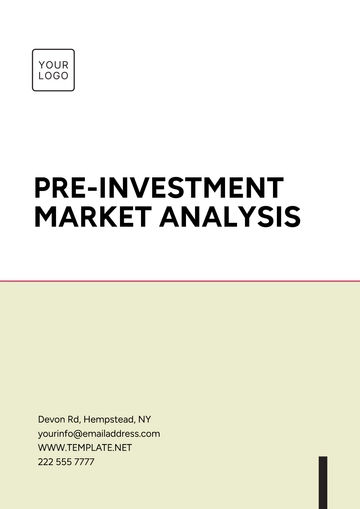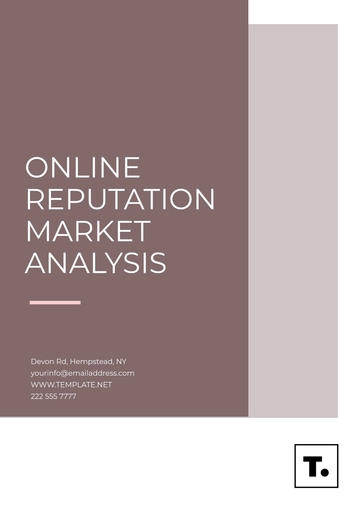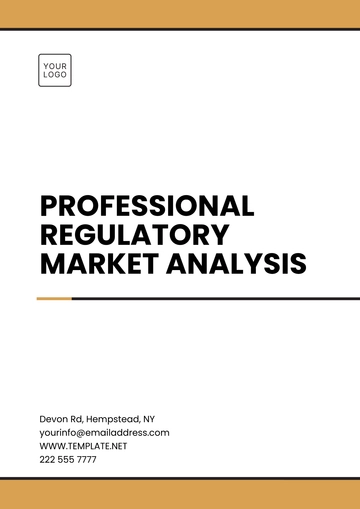Marketing Campaign Analysis Report
Prepared by: [Your Name]
Company: [Your Company Name]
Date: [Date]
1. Introduction
The purpose of this report is to analyze the recent marketing campaign conducted by our company. This analysis aims to evaluate the effectiveness of the campaign in terms of reach, engagement, conversion rates, and return on investment (ROI). We will explore various metrics, compare them to industry benchmarks, highlight challenges encountered, and provide actionable insights to enhance future campaigns.
2. Campaign Overview
Our marketing campaign, titled "Go Beyond," was launched on June 1, 2050, and concluded on September 30, 2050. The primary objective was to increase brand awareness, drive website traffic, and boost sales of the newly launched product line. The campaign was executed across multiple channels, including social media, email marketing, content marketing, and online advertising.
Key Objectives
Increase brand awareness by 30%
Boost website traffic by 50%
Achieve a 10% increase in sales for the new product line
3. Performance Metrics
3.1. Reach and Engagement
The campaign reached an estimated audience of 2.5 million people across various digital platforms. The following table provides a breakdown of reach and engagement metrics:
Channel | Impressions | Clicks | Engagement Rate |
|---|
Social Media | 1,200,000 | 180,000 | 15% |
Email Marketing | 500,000 | 75,000 | 15% |
Content Marketing | 300,000 | 45,000 | 15% |
Online Advertising | 500,000 | 100,000 | 20% |
3.2. Conversion Rates
The effectiveness of the campaign in converting audience interaction into sales is depicted in the following table:
Channel | Channel | Conversion Rate |
|---|
Social Media | 25,000 | 13.89% |
Email Marketing | 12,000 | 16% |
Content Marketing | 5,000 | 11.11% |
Online Advertising | 18,000 | 18% |
3.3. Return on Investment (ROI)
The financial efficacy of the campaign, measured in terms of ROI, provides insights into the monetary benefits realized. The total expenditure for the campaign was $1,000,000, and the revenue generated was $1,500,000, resulting in an ROI of 50%.
4. Data Analysis
4.1. Social Media Performance
Social media platforms were the focal point of the campaign strategy due to their extensive reach. The platforms employed included Facebook, Instagram, and Twitter, with Instagram delivering the most notable engagement and conversion metrics. Despite achieving high impressions, a gap in conversion tracks indicates a need for more targeted call-to-action implementations.
4.2. Email Marketing Effectiveness
Email marketing proved to be a strong performer in terms of conversion rates. The targeted email lists and personalized messaging were critical components contributing to the success of this channel. Future enhancements could include more A/B testing to optimize subject lines and email templates.
4.3. Content Marketing Engagement
Content marketing played a supportive role in the campaign, aimed primarily at nurturing leads and guiding them through the marketing funnel. The conversion rates suggest room for improvement in aligning content with consumer preferences and search engine optimization.
4.4. Industry Benchmark Comparison
When compared to industry benchmarks, our campaign's performance stands favorable in several areas. The average engagement rate in our industry is approximately 10%, whereas we achieved overall rates above this mark across most channels. Similarly, conversion rates were 3% higher on average compared to competing campaigns, suggesting a positive reception to our messaging and product offering.
5. Challenges Encountered
Underperforming Content Marketing: While content marketing supported lead nurturing, its contribution to conversions was lower than expected, indicating misalignment with audience needs.
Conversion Gaps on Social Media: High engagement on social media did not fully translate into conversions, highlighting issues in call-to-action placement.
Resource Allocation: The campaign budget was distributed equally across channels, potentially underfunding high-performing areas like online advertising.
6. Lessons Learned
Channels with strong ROI, such as online advertising, should receive proportionate investments in future campaigns.
Personalization and targeted strategies in email marketing significantly improve conversion rates.
Data-driven insights can guide content optimization to better align with consumer preferences.
7. Recommendations
Enhance Targeted Social Media Strategies:
Invest in Marketing Automation Tools:
Refine Content Marketing:
Conduct periodic audits to ensure content aligns with audience interests and SEO best practices.
Experiment with interactive content such as quizzes, polls, and videos to boost engagement.
Reallocate Budgets Dynamically:
Monitor and Evaluate in Real Time:
8. Conclusion
The "Go Beyond" marketing campaign successfully met its primary objectives, showcasing significant improvements in brand awareness, website traffic, and sales. By analyzing performance metrics, addressing challenges, and implementing the recommendations provided, future campaigns can achieve even greater success. This report underscores the importance of a data-driven approach and continual refinement to ensure sustained growth for our brand and product lines.
Report Templates @ Template.net






























